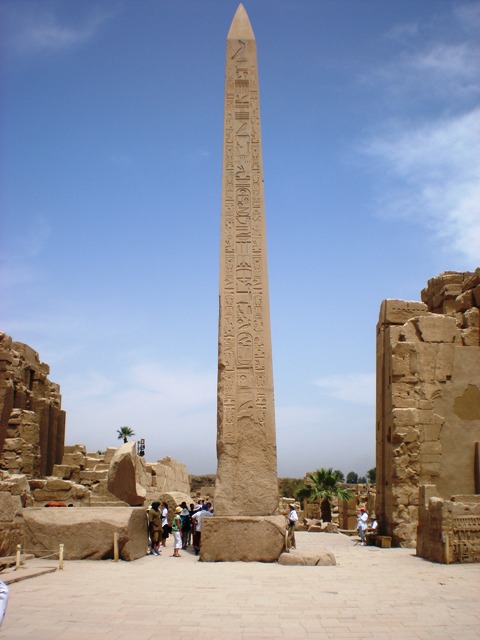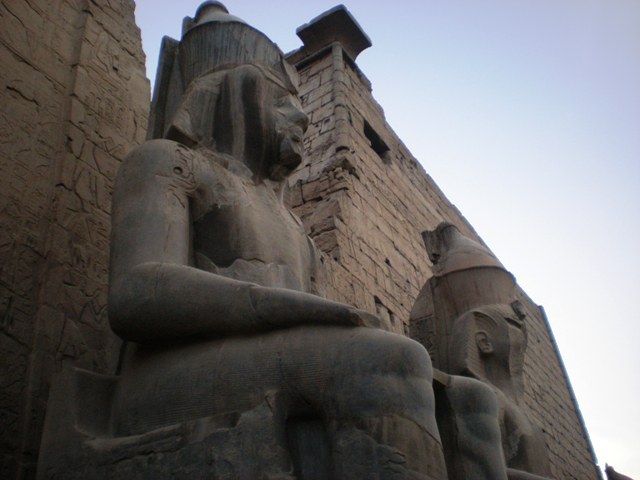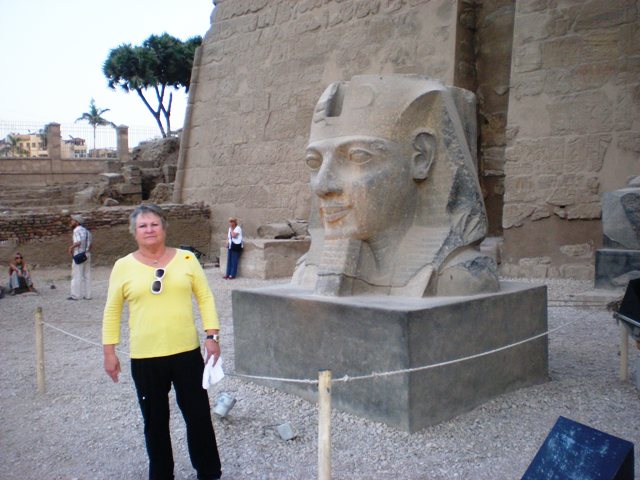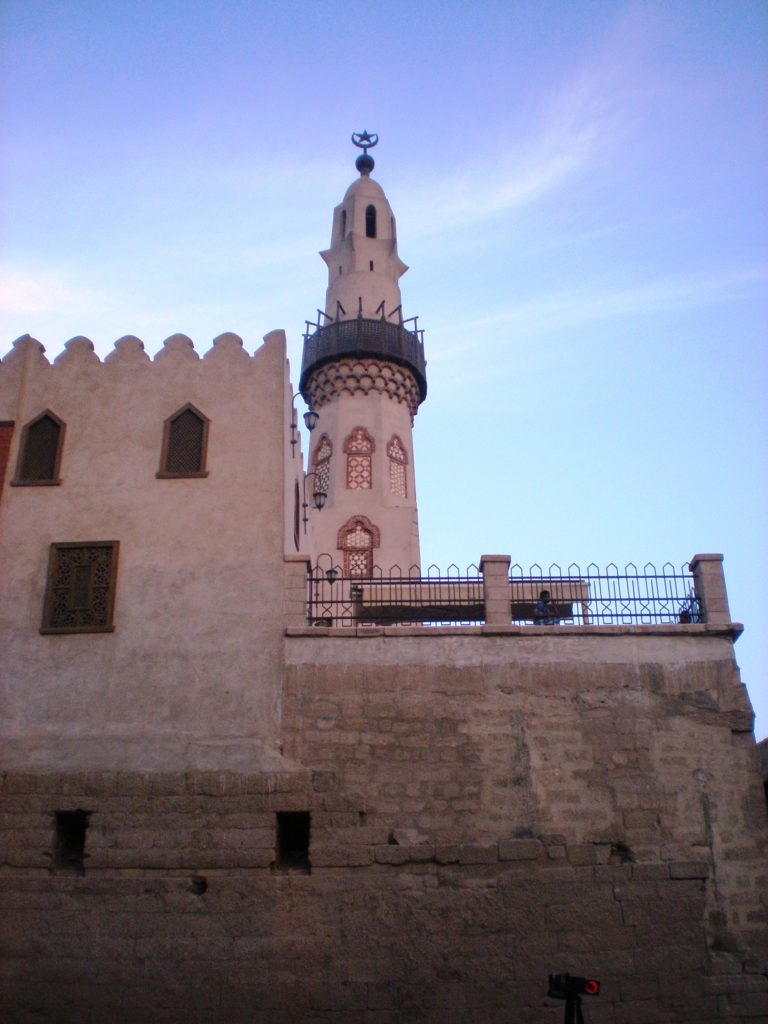April 5, 2012 – Safaga – Luxor, Egypt
Day 90
The port of Safaga is the nearest one to Luxor – our target for the day. Luxor, an important city in ancient Egypt, was the primary center of worship, governance, and residence for some thirty pharaohs from about 2100 BC to approximately 1000 BC (at least as near as I can tell). There are three principal, and many minor sites in and around Luxor: 1)The Temple of Karnak, 2)The Temple of Luxor, and 3) The Valley of the Kings. But first we have a three hour bus ride to get to Luxor from Safaga.
Our arrival at Safaga

This scene at the port in Safaga was amazing – apparently these folks are either going to or coming from Jeddah on the ferry docked next to us. The picture can’t show the arguments going, which could be heard on our top deck.
Egyptian Fed Ex?

The scenery on the way to Luxor was mountainous, barren and dry, broken up only by military and police checkpoints every few miles. We were cautioned not to take pictures of them or the personnel in them – the guide said they were rest stops, and they were the first rest stops I have ever seen with guard towers. They seemed to be left over from a previous time, as the personnel were either sleeping, eating or talking, not guarding or inspecting. At each one of these, however, the traffic was reduced to one lane (not one each way – just one lane) and there were traffic bumps requiring the buses to slow to about 5 mph.
En route to Luxor

Along the way we saw several groups of camels, but too far away for a picture – then at a turn in the road we spotted a truck hauling a group of them and we passed close enough for a good picture.

The only things more common than the “rest stops”, as we near Luxor are the Minarets (the Muslim prayer towers). Each Mosque has one, and they are very tall, and interspersed throughout each city, perhaps one per neighborhood. On the way home, at night, they were even easier to spot as they were lit up with green neon – the only bright lights to be seen.
Minaret – One of many



The first stop on our route was the Temple of Karnak which occupies a large area in the middle of Luxor, and was built by 30 or more Pharaohs over a long period of time, with each one adding different features. At one time it’s entrance was connected to the Nile (about ¼ mile away) by a canal, now filled in and covered with stone.
Entrance to Karnak

It was impossible to understand, much less record, the names and significance of these various columns, statues and obelisks, so I include them here without comment or title. Needless to say they were magnificent and standing amongst them and viewing them needs to be on everyone’s list.







The “pile” of mud bricks at the bottom of this stone wall show how these were erected. The mud “ramps” were built up as the wall went higher, allowing the workers to move the stones up and in to place. When finished, the mud ramp was disassembled. By the way – the guides informed us that the workers were not slaves, but were “ancient Egyptian workers” who worked for the honor of serving the Pharaoh. I think Moses had a slightly different version.


After leaving the Temple of Karnak, we had lunch at a really nice Hotel in Luxor and then made the trip to the Valley of The Kings which is about 10 miles from Luxor, on the west side of the Nile. We got our first real view of the Nile as we crossed one of the few bridges to the west bank.

After crossing, we traveled next to a canal, which the guide described as “ancient” and he explained that the unfinished houses, of which there more than finished houses, were done with a plan in mind. The owners anticipated that as they saved more money (mortgages don’t exist here) and the family grew, they would add stories to the house – the rebar already being in place. I wonder if the covenants in Sun City would allow for this? Note the ever-present burros in the front yard.

Unfortunately, no cameras or cell phones were allowed in the Valley of The Kings (they inspected us) so I have no photos. There are 62 tombs of Pharaohs in the Valley. They began using this place when looting became commonplace at the Temples, where earlier Pharaohs had their tombs. They eventually built pyramids, mostly at Giza, on the theory that piling more and more stones over the tomb would prevent theft. Ironically, the Pharaohs were trying to protect their mummies so they could return to life, and the looters were after the treasure and often discarded the mummy. We visited two of the tombs and while they were interesting, they were little more than corridors, decorated with hieroglyphics, about 100 feet long with a burial chamber at the end. I guess we have been tainted by Hollywood’s version of these tombs.
A note here about the Egyptians we encountered. They were, without exception, friendly, helpful, and most anxious to let us know they are doing much better after their revolution. When asked about the upcoming election for President, they shrug off the Muslim Brotherhood and say they do not represent the average Egyptian. We shall see. As nice as they were, the vendors were the most aggressive I have ever encountered. They will not take no for an answer and after agreeing on a price, they renege. Some of them came close to violence with some of their customers.
Leaving the Valley of The Kings, we made a brief stop at the Temple of Hutschepsut (sp?) one of the few women Pharaohs. The guide said to pronounce it Hot Cheap Suit.


We headed back across the Nile to Luxor and our final destination on this tour – The Temple of Luxor. These boats are Nile Cruisers and they make trips, from one to two weeks between Aswan and Cairo.

En route to Luxor Temple – note the traditional dress and the burro transportation – very common.


This is a Coptic Christian Church, I believe similar to Eastern Orthodox and is located in downtown Luxor near the Temple of Luxor. We saw quite a few of these churches in Luxor.

The Temple of Luxor was connected to the Temple of Karnak by canals from the Nile as well as by a roadway about 2 kilometers long. Once again, I include the pictures without title or comment.





The walls on this Mosque show the level of the ground before this temple was excavated.

The kids will especially love these photos! So awesome!